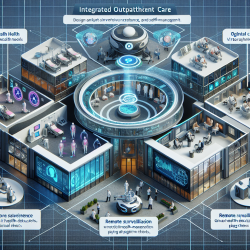Introduction
The Harm Threshold (HT) and John Stuart Mill's Harm Principle have long been central to debates on state intervention in parental decision-making for children's healthcare. The recent paper, The harm threshold and Mill’s harm principle, challenges the conventional interpretation of Mill's principles, suggesting a shift in focus from the severity of harm to the nature of parental obligations. This blog explores these findings and their implications for practitioners in speech-language pathology and other pediatric care fields.
Understanding Mill’s Harm Principle
Mill's Harm Principle asserts that the only justification for exercising power over any member of a community, against their will, is to prevent harm to others. Traditionally, this principle has been interpreted to mean that state intervention is warranted only in cases of significant harm. However, the recent analysis suggests that Mill's principle is less about the severity of harm and more about whether harm arises from a failure to fulfill one's duties.
Parental Duties and State Intervention
The paper argues that Mill’s Harm Principle should not be seen as a high threshold for intervention based solely on the severity of harm. Instead, it emphasizes the importance of parental duties. According to Mill, society is justified in intervening when a harm results from a violation of parental obligations. This perspective challenges the notion of a protected domain of parental liberty and suggests a broader scope for justified state intervention.
Implications for Practitioners
For practitioners in speech-language pathology, this shift in understanding has significant implications. It underscores the importance of considering the nature of parental duties in clinical decision-making. Practitioners should be aware that interventions may be justified not only in cases of severe harm but also when parental decisions fail to meet the obligations owed to children.
Encouraging Further Research
This new interpretation of Mill’s Harm Principle invites practitioners to engage in further research and discussion. Understanding the nuances of parental duties and state intervention can enhance the effectiveness of clinical practices and policies aimed at safeguarding children's welfare.
Conclusion
Mill’s Harm Principle, when viewed through the lens of parental duties, offers a more comprehensive framework for understanding state intervention in pediatric decision-making. Practitioners are encouraged to consider these insights in their work and to explore further research in this area.
To read the original research paper, please follow this link: The harm threshold and Mill’s harm principle.










